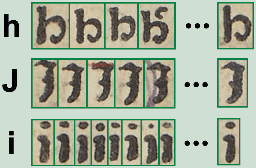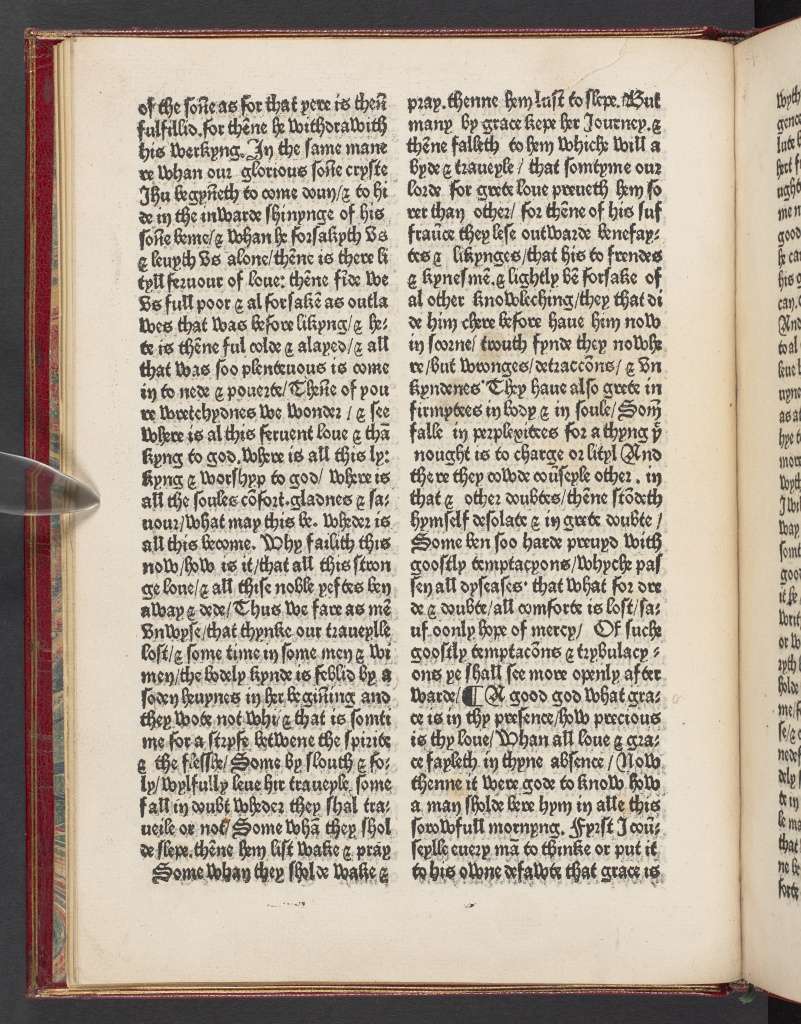ICDAR 2025 Competition on Glyph Detection in 15th-Century European Printed Documents
This competition is focused on the detection of glyphs in early European printed documents from the 15th century. The primary aim is to build an extensive corpus of glyphs by accurately extracting a large number of characters, with an emphasis on high precision rather than complete coverage. We will provide dataset that contains multiple historical printed documents with varying image quality.

Example of some glyphs, and their variations inside a single document.
Tasks
There are two main tasks:
- Glyph detection and localization
For this first tasks, participants have to produce tight bounding boxes around the glyphs. - Glyph classification
For this second task, participants have to identify which glyph is contained by the bounding boxes produced in the first task.
Challenges
While this is a quite straightforward object detection and classification task, challenges come from three different sources:
- The variation document preservation quality and image definition,
- The large amount and density of the glyphs,
- The small size of the glyphs relatively to the page,
- And the sparsity of the labeled data.
Registration
Participation is open to anybody without prior registration. However, registered participants will be informed by e-mail of any update, such as the publication of the test data.
Registration can be made either by filling the following form: https://forms.gle/kiwTuNUtTNzfmUtRA
or by sending an e-mail to the organizers (see “Contact” below).
Timeline
- Ongoing: registration is open.
- 30th of March: participants receive the test set (without ground truth), and a link to a competition platform where they can submit their results
- 25th of April: deadline for the participants to submit:
- Their results on the competition platform,
- A short description of their method, their team name, and names of team members to the e-mail addresses given in the “Contact” section below.
Data
We sorted the training data into two subsets based on the density of their annotations. The first one, “training-25plus” corresponds to images with the densest annotations (at least 25% of the estimated text area). The second one contains the images with a lower density. There is no overlapping between these two subsets, thus we would recommend not to use only the second one.
Everything can be obtained at the following address
https://faubox.rrze.uni-erlangen.de/getlink/fi53t9EmHRryikPEK9o7Lu/icdar25-glyph-detection
Sparsity
The training data was producing by automatic extraction using an automatic pipeline, followed by a careful manual check done by a trained scholar. As mislabeled data was discarded, the ground truth is sparse, i.e., not all glyphs of a page are labeled. This should be taken into account in training procedures.
Test set
The test set will be released at the end of March. This set will contain full annotations, i.e., all legible glyphs will be annotated.
Evaluation
The mean detection precision with IoU thresholds between 0.5 and 0.95 with step size of 0.05,
Competition platform
https://www.kaggle.com/competitions/icdar-2025-glyph-detection
What to submit
Results on the test set must have the same structure as the training ground truth, i.e., a COCO .json file.
The method description, which has to be submitted to the organizers, should ideally be one to few paragraphs long. It should ideally contain:
- Team name as it should be published,
- Names and affiliation of the team members,
- Methodology, including how you trained your method,
- Necessary citations (e.g., if your approach is based on some previous work).
Organizers
Mathias Seuret, Florian Kordon, Martin Mayr, Randall Herz, Janne van der Loop, Nikolaus Weichselbaumer, Jochen Zöllner, Fei Wu, Thomas Gorges, and Vincent Christlein
Contact
The competition organizers can be contacted by e-mail at the following addresses: X@fau.de, where X is “mathias.seuret” and “vincent.christlein”. Please send e-mails to both, and start the e-mail title with “Competition: “.
